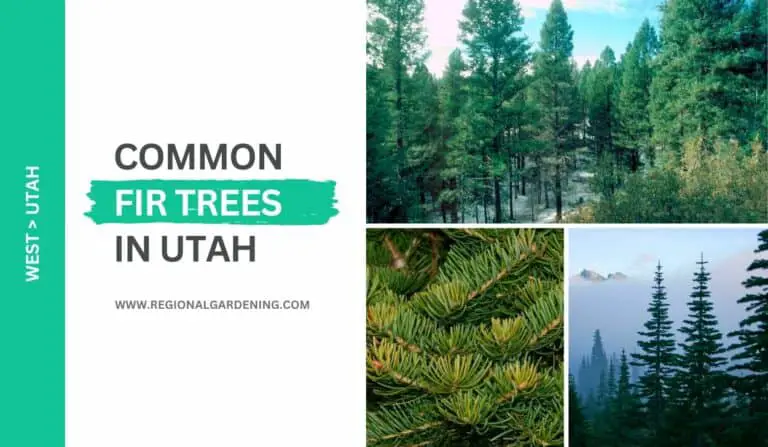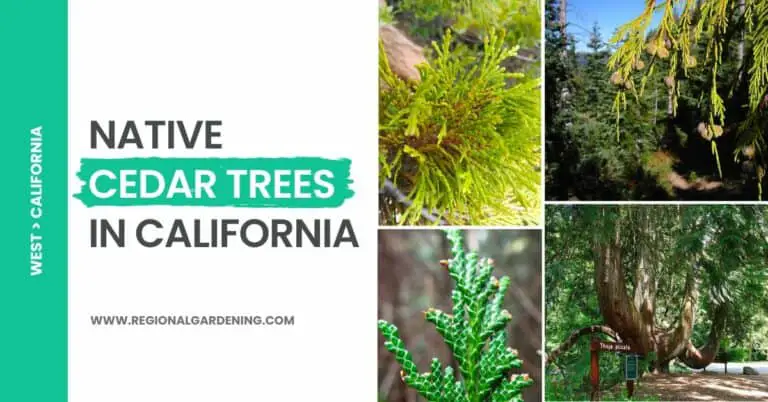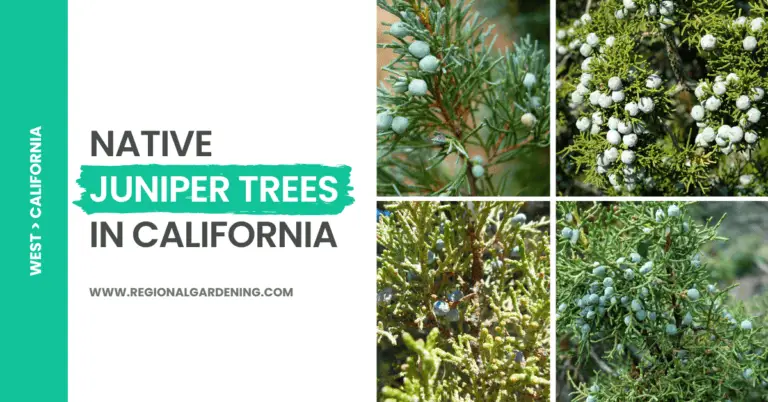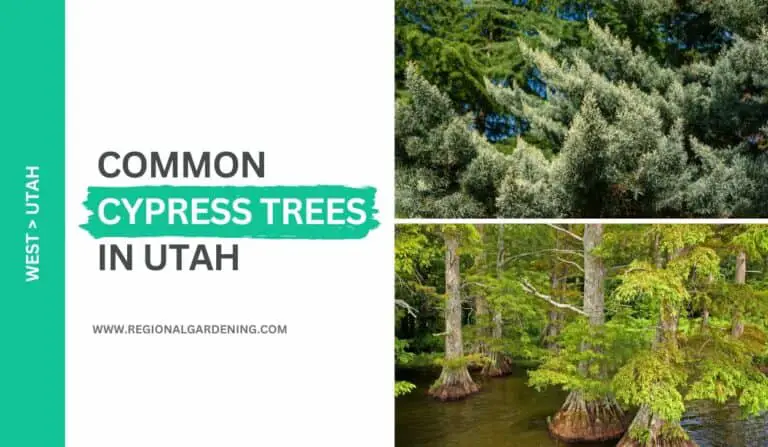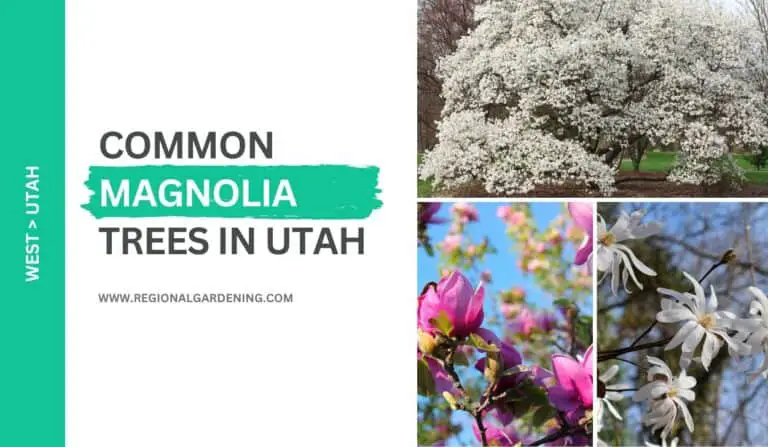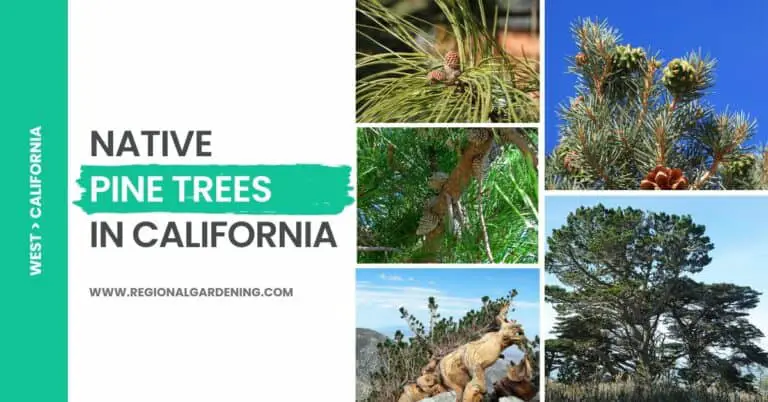5 Types Of Spruce Trees In Utah (Photos & Identification)
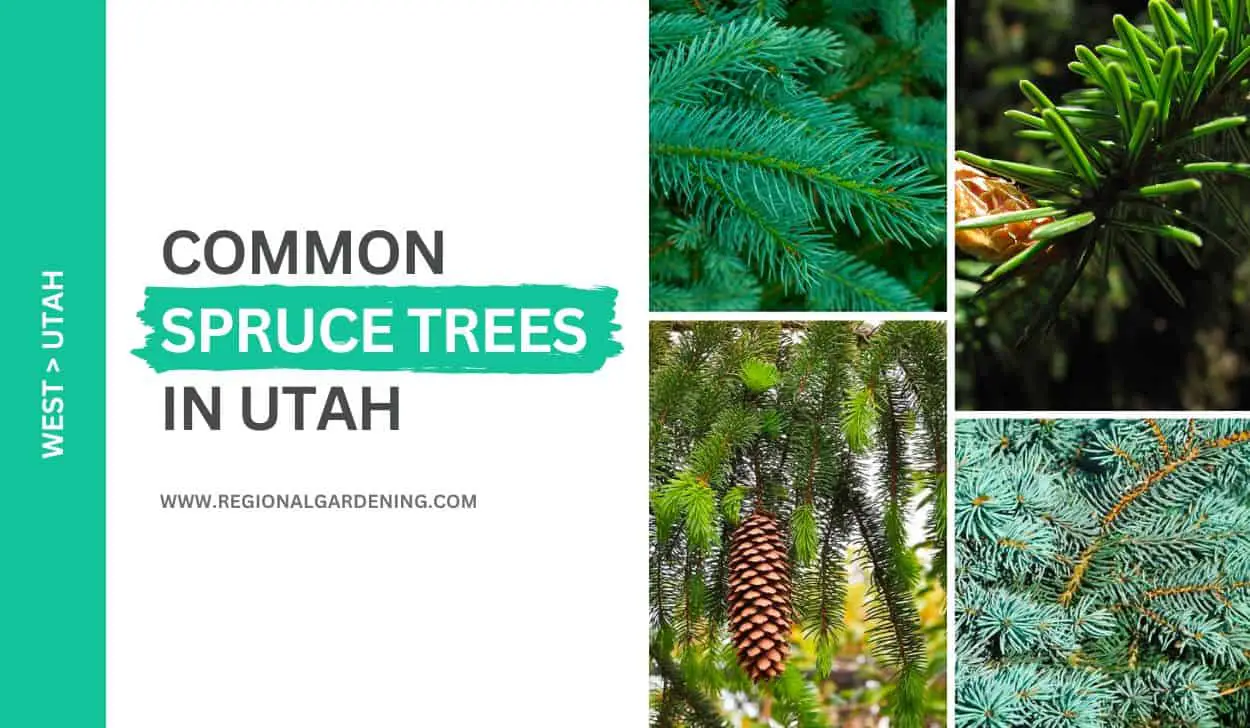
If you want to plant some amazing coniferous trees in your Utah garden, a spruce tree is an excellent choice.
Even though spruce trees are not native to Utah, five varieties have adapted to the state’s conditions and thrive. This article will go over the specifics of these five spruce trees in Utah so that you can make an informed decision.
Let’s start with the most common, Blue Spruce.
1. Blue Spruce
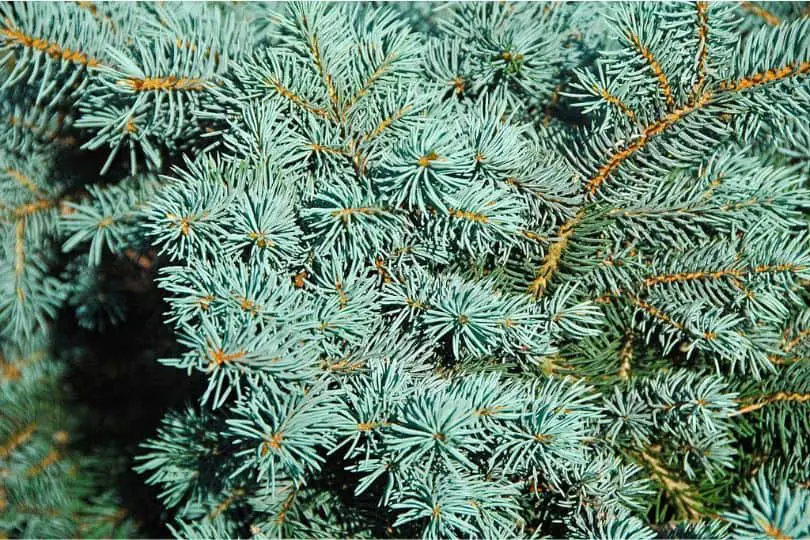
- Common Name: Colorado Blue Spruce
- Scientific Name: Picea pungens
- Mature Height: 50-75 feet tall
- Native/Non-Native: Native to the Rocky Mountains and Intermountain states
- Flowers/Cones: Papery cones that hang down; light chestnut-brown color
- Uses: Landscape decoration, wind, and sound screen
Colorado Blue Spruce trees are the most common spruce trees in Utah. It is a slow-growing evergreen tree that served as Utah’s state tree until 2014 when Quakin Aspen took over.
It is native to the Rocky Mountains and the Intermountain states and can reach heights of 50-75 feet. The needles of the Colorado Blue Spruce are about 1″ long and sharp-pointed, reaching at right angles all around the twig. Its leaves are evergreen and range in color from blue-white to dark green, emitting a sweet smell when crushed.
This tree is good for landscape decoration since it is visually pleasing and acts as a wind and sound screen. However, it is critical to leave enough space for the tree to grow tall and spread gradually.
It prefers rainfall and good soil and may not tolerate high temperatures or hot, dry winds. The Colorado Blue Spruce tolerates moderate shade and may be sensitive to wind throw.
On older trees, the bark of the Colorado Blue Spruce ranges from light to dark gray and is composed of thin scales with wide, thick ridges. This tree’s fruit is a papery cone that hangs down and has slightly round-toothed scales at the apex. It has glabrous twigs and buds that form a rosette, especially in the spring.
Although it is a wonderful tree, it is overgrown in many locations, and Cooley spruce gall adelgid can cause unattractive brown galls to appear on twig ends, particularly in the landscape.
Its wood has little value and is similar to Engelmann spruce. The Colorado Blue Spruce can be an amazing addition to any landscape, but it is critical to remember all of its distinctive traits to ensure its survival and growth.
2. White Spruce
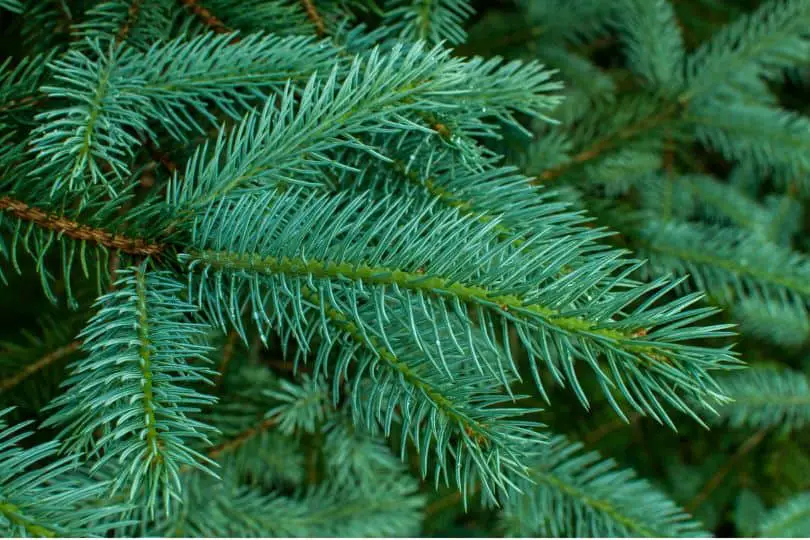
- Common Name: White Spruce/Black Hills Spruce
- Scientific Name: Picea glauca
- Mature Height: 40-60 feet
- Native/Non-Native: Native in the Black Hills, northern Lake States, northeastern U.S., and throughout Canada and Alaska. Not native to Utah.
- Flowers/Cones: Papery cones that hang down, 1.5-2.5 inches long, light brown
- Uses: Wood is used for pulp, millwork, boxes, and piano sounding boards.
One of the most commonly found spruce trees in Utah, the White Spruce, sometimes known as the Black Hills Spruce, is a medium-sized evergreen tree.
The White Spruce grows slowly and prefers moist, well-drained soil. It tolerates shade and has a thin crown with short needles, making it an appealing landscape tree.
It has slender, blue-green needles that range in length from 13 to 34 inches. Because of the twisting of the needles from the lower side, the needles are jammed on the top side of the branch. When crushed, the needles emit a strong odor.
When crushed, the twigs of the White Spruce are orange-brown to gray and have a pungent odor. The cones are made of paper and dangle from the tree. They measure 1.5-2.5 inches in length and are light brown. The bark is flaky, gray-brown, and thin.
White spruce wood is used for pulp, millwork, boxes, and piano sounding boards. It has a light tint and the heartwood and sapwood are not dissimilar. The White Spruce is endemic to the Black Hills, northern Lake States, the northeastern United States, as well as Canada and Alaska, but not to Utah.
3. Engelmann Spruce
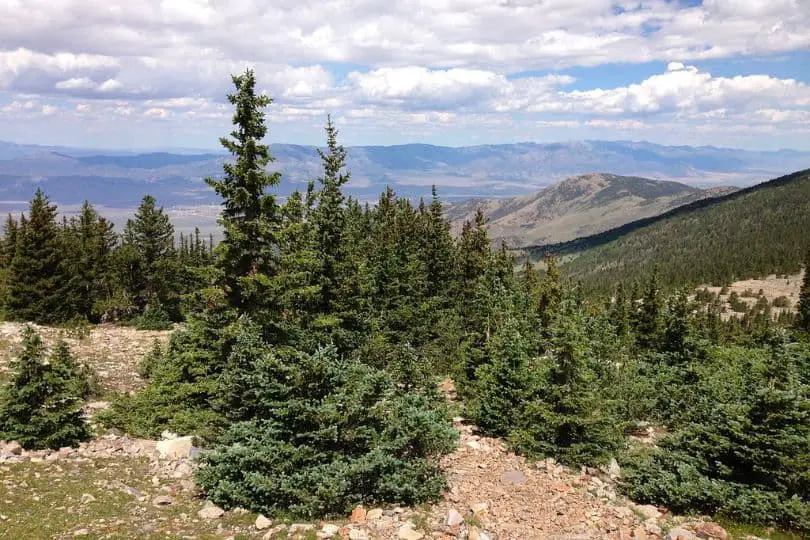
- Common Name: Engelmann Spruce
- Scientific Name: Picea engelmannii
- Mature Height: 50-150 feet
- Native/Non-Native: Native
- Flowers/Cones: Papery cones that hang down
- Uses: Lumber, poles, ties, and fuel
One of the tallest spruce trees in Utah, the Engelmann Spruce, scientifically known as Picea engelmannii, is an evergreen tree that may reach heights of 150 feet!
Its needle-like leaves are around 1 inch long and blue-green to dark green in hue. They are not as sharply pointed as blue spruce needles and are clustered on the upper side of the twig. They have a pleasant aroma when crushed.
Engelmann Spruce is found in the Rocky Mountains, the Pacific Northwest, and western Canada. This slow-growing tree prefers cool, damp locations with rich soil. Windthrow (trees being blown over) can, however, be an issue if the site is disturbed. The tree can also withstand shade.
The twigs on this tree are rough because a short stalk connecting the leaves retains some of the twigs. Young twigs have small hairs, and buds have rather flat scales.
The Engelmann Spruce’s fruit is a papery tiny cone that hangs down. These cones are roughly 1 to 2 1/2 inches long and have papery scales that are light chestnut-brown and slightly round-toothed at the tip.
Even though Engelmann Spruce is rarely utilized in landscaping, some mountain homes are built within Engelmann Spruce forests. Nonetheless, it is unlikely to thrive in lower, warmer, and drier environments. Blue spruce is more widely accessible and offers excellent cultivars. Zones 2-5 are suitable for Engelmann Spruce.
This tree is of minor importance since it is frequently used to make lumber, poles, ties, and fuel. Its wood is near-white to light brown in hue, with noticeable growth rings.
4. Norway Spruce
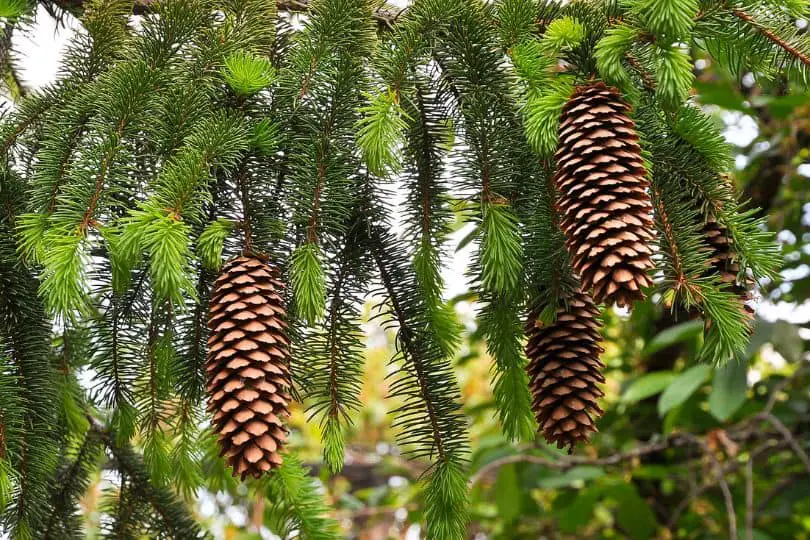
- Common Name: Norway Spruce
- Scientific Name: Picea abies
- Mature Height: 40-60 feet (12-18 meters)
- Native/Non-Native: Native to Europe, widely planted ornamentally in the US
- Flowers/Cones: Large papery cones, light tan colored
- Uses: Used for pulp and paper, planted for ornamental purposes
Another commonly found variety among medium-sized spruce trees in Utah, the Norway spruce is a lovely evergreen tree that is often planted as an ornamental in the United States.
This tree is endemic to Europe and can reach heights of 60 feet. The needles or leaves are dark green and around 1 inch long. They are crisp and evergreen, which means they remain green all year.
On elder trees, the twigs or branches are glabrous or smooth and might hang down and sway in the breeze. The buds are small, about a quarter-inch long, and light or red-brown. Norway spruce cones are big, papery, and light brown in hue.
The Norway Spruce is a medium-sized tree that can grow to be very tall and wide in the landscape. Combining two or three in a large-scale landscape can be highly effective. Some varieties have exceptionally lovely weeping branchlets.
It is crucial to note that the landscape application of Norway Spruce varies greatly according to the cultivar. It is suitable for zones 2-7 and has moderate shade tolerance.
On older trees, the bark is light to dark gray and composed of thin scales in wide ridges. Norway Spruce wood is pale in color, with an unclear heartwood that is slightly resinous. It is commonly utilized in the production of pulp and paper.
6. Serbian Spruce
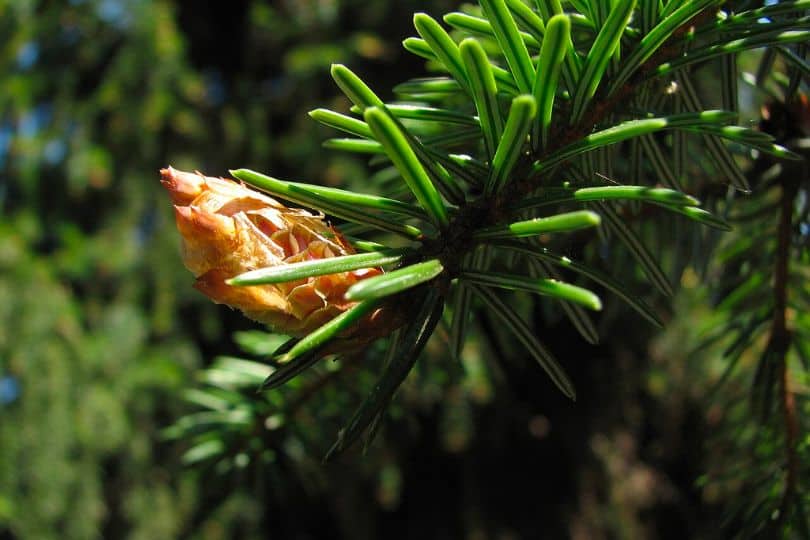
- Common Name: Serbian Spruce
- Scientific Name: Picea omorika
- Mature Height: Up to 100ft
- Native/Non-Native: Native to southeastern Europe
- Flowers/Cones: Fruit a papery cone that hangs down
Serbian Spruce trees are one of the tall spruce trees in Utah along with Engelmann Spruce. It is a majestic evergreen tree native to southeastern Europe and has the potential to grow fairly big, making it a giant tree.
This tree is adaptable to a wide range of soils and environments and prefers moderate shade. It is cold-hardy and shade tolerant.
Serbian Spruce needles are around 1/2″ to 1″ long and borne singly. They are evergreen and sharp-pointed, with a dark green top and silver-green streaks beneath. The needles have a somewhat flattened cross-section but are ridged.
Serbian Spruce develops papery cones that hang down and are 1-1/4″ to 2″ in length. The cones grow to a reddish-brown tint with rounded, complete-scale edges.
Serbian Spruce is a very desirable spruce with attractive foliage that deserves to be used more in landscaping. It is not commonly planted in Utah, but it is an excellent choice for Zones 4-7.
Spruce Trees In Utah – Frequently Asked Questions (FAQs)
Let’s answer some of the most frequently asked questions about common spruce trees in Utah. These questions were taken from threads and forums related to gardening.
Are there spruce trees in Utah?
There are spruce trees in Utah and in fact, it is pretty common in the state. The most commonly seen spruce trees in Utah are White Spruce, Blue Spruce, Engelmann Spruce, Norway Spruce, and Serbian Spruce.
Is Colorado blue spruce the state tree of Utah?
Although the blue spruce is Colorado’s state tree, it was also Utah’s state tree until 2014. However, as of now, Colorado’s state tree is Blue Spruce, and Utah’s state tree is Quaking Aspen.
What are the uses of spruce trees in Utah?
Utah spruce trees are valued in the timber industry for their high-quality wood, which is used in construction, furniture manufacturing, and other woodworking applications. The spruce trees also benefit the state’s ecosystem by providing habitat and food for wildlife such as birds and mammals. Spruce trees are also used in landscaping and as ornamental trees, adding aesthetic appeal to residential and public spaces. Additionally, their dense foliage aids in erosion control and acts as a windbreak.
Similar Articles
- Common Oak Trees In Utah
- Common Pine Trees In Utah
- Common Mulberry Trees In Utah
- Common Magnolia Trees In Utah
- Common Ash Trees In Utah
- Common Elm Trees In Utah
- Common Birch Trees In Utah
- Common Maple Trees In Utah
- Common Dogwood Trees In Utah
- Common Poplar Trees In Utah
- Common Nut Trees In Utah
- Common Pear Trees In Utah
- Common Cedar Trees In Utah
- Common Willow Trees In Utah
- Common Alder Trees In Utah
- Common Cypress Trees In Utah
- Common Beech Trees In Utah
- Common Juniper Trees In Utah
- Common Fir Trees In Utah
- Common Plum & Cherry Trees In Utah
- Common Palm Trees In Utah
Sources
The Regional Gardening team makes sure that the information in our articles is accurate by only using sources that are known to be trustworthy. Some of these sources are peer-reviewed journals from government agencies, well-known universities, and scientific research organizations.
- Trees & Shrubs In Yard And Garden, Utah State University Extension
- Native & Non-Native Tree Identification, Utah State University Forestry Extension.
- Native Plants, Utah Native Plant Society.
- A Guide To The Trees Of Utah & Intermountain West, Book By Michael Kuhns, Utah State University Press.


